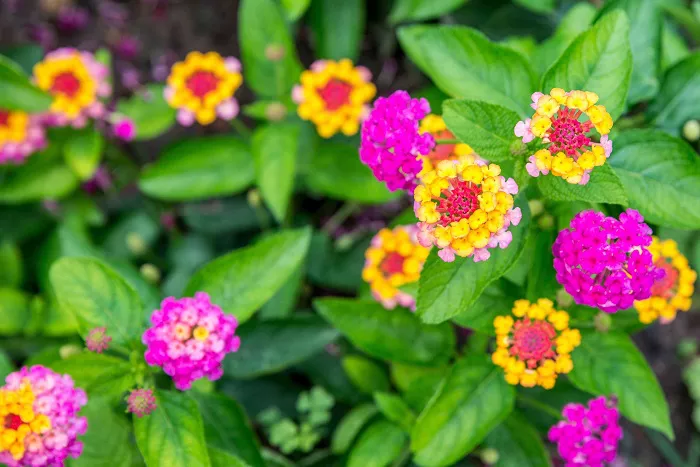Lantana plants are a delightful addition to any garden, with their vibrant blooms and easy – going nature. These hardy perennials have become a favorite among gardeners for their ability to thrive in various conditions. But how long can you expect your lantana to grace your garden? This article will explore the lifespan of lantana plants, the factors that influence their longevity, and how you can help them thrive for years to come.
Understanding the Lifespan of Lantana Plants
Lantana plants typically have a lifespan ranging from 3 to 5 years in most climates. However, with proper care and ideal growing conditions, they can live much longer, sometimes up to 10 years or more. The key to maximizing their longevity lies in understanding the factors that affect their growth and health.
Climate and Hardiness
Lantana plants are native to tropical and subtropical regions, making them well – suited to warm climates. They thrive in USDA hardiness zones 8 to 11, where they can grow as perennials. In these zones, lantana can survive mild winters and continue to bloom year after year.
However, in colder climates, they are often treated as annuals, as freezing temperatures can damage or kill the plant. If you live in a cooler region but still want to enjoy lantana, consider growing it in a container that can be brought indoors during the winter months.
Soil and Water Requirements
Lantana is known for its drought tolerance, making it an excellent choice for low – water gardens. It prefers well – drained soil and can thrive in sandy or rocky conditions. Overwatering is a common mistake that can lead to root rot and other diseases. Aim to water your lantana only when the top inch of soil is dry. When it comes to soil, a slightly acidic to neutral pH (around 6.0 to 7.0) is ideal. Adding organic matter, such as compost, can improve soil structure and fertility, providing the nutrients lantana needs to grow strong and healthy.
Pruning and Maintenance
Regular pruning is essential for maintaining the health and appearance of your lantana plant. Pruning helps to remove dead or damaged branches, encourages new growth, and keeps the plant from becoming too leggy. The best time to prune lantana is in late winter or early spring, before new growth begins. Remove about one – third of the plant’s height and any branches that are crossing or rubbing against each other. This will allow for better air circulation and light penetration, reducing the risk of disease.
Pests and Diseases
Despite its hardy nature, lantana can still be susceptible to pests and diseases. Common pests include whiteflies, aphids, and spider mites. These can be controlled with insecticidal soap or neem oil, which are both safe for use on lantana. Diseases such as powdery mildew and root rot can also affect the plant, especially in humid or poorly – drained conditions. To prevent these issues, ensure proper air circulation around the plant and avoid overwatering. If you notice any signs of disease, such as yellowing leaves or white powdery spots, remove the affected parts immediately to prevent the spread.
Extending the Lifespan of Your Lantana
With a little extra care and attention, you can help your lantana plant live its best life and potentially extend its lifespan. Here are some tips to keep your lantana thriving:
Fertilization
While lantana is not a heavy feeder, providing it with a balanced fertilizer in the spring can give it a boost and encourage more blooms. Choose a slow – release fertilizer with equal parts nitrogen, phosphorus, and potassium (such as a 10 – 10 – 10 formula). Follow the package instructions for the correct amount to apply. Avoid over – fertilizing, as this can lead to excessive growth and fewer flowers.
Sunlight and Placement
Lantana loves the sun and needs at least 6 to 8 hours of direct sunlight per day to thrive. When choosing a location for your lantana, make sure it is in a spot that receives plenty of light. If you are growing it in a container, you can move it around to follow the sun as needed. Proper sunlight exposure not only promotes healthy growth but also helps to keep the plant warm, which is essential for its overall health.
Propagation and Renewal
If you have a mature lantana plant that is starting to decline, consider propagating it to create new plants. Lantana can be easily propagated from stem cuttings taken in the spring or summer. To do this, select a healthy stem and cut a section about 4 to 6 inches long. Remove the lower leaves and dip the cut end in rooting hormone.
Then, plant the cutting in a pot filled with moist potting soil. Keep the soil consistently moist and place the pot in a warm, bright location. In a few weeks, the cutting should develop roots and can be transplanted to a larger pot or planted directly in the garden.
Companion Planting
Lantana is a great companion plant for other sun – loving flowers and herbs. Planting it alongside marigolds, zinnias, or lavender can create a beautiful and vibrant garden display. These companion plants can also help to attract beneficial insects, such as bees and butterflies, which can aid in pollination and pest control. Additionally, the strong scent of some companion plants can help to deter pests from attacking your lantana.
Conclusion
Lantana plants offer a burst of color and low – maintenance beauty to any garden. With a typical lifespan of 3 to 5 years, they can live much longer with the right care and conditions. By understanding their needs and providing proper maintenance, you can enjoy the vibrant blooms of lantana for many seasons to come. Whether you are a seasoned gardener or just starting out, lantana is a plant that is sure to bring joy and charm to your outdoor space.


